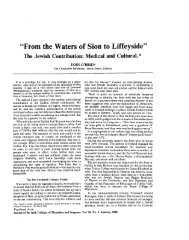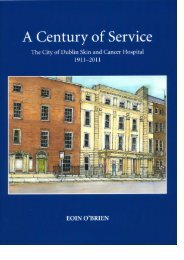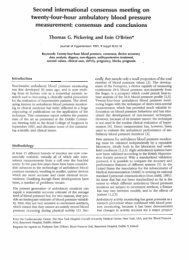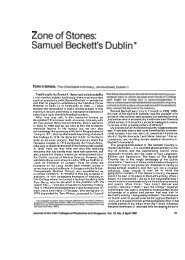Nevill Johnson: Paint the smell of grass - Eoin O'Brien
Nevill Johnson: Paint the smell of grass - Eoin O'Brien
Nevill Johnson: Paint the smell of grass - Eoin O'Brien
Create successful ePaper yourself
Turn your PDF publications into a flip-book with our unique Google optimized e-Paper software.
Europe(detail)<br />
II. The Dublin years 1947–1958<br />
“It is <strong>of</strong>ten, I think, difficult to detect whe<strong>the</strong>r we make decisions or accept <strong>the</strong>m:<br />
whe<strong>the</strong>r we are willing or willed.”<br />
PLACE RECURS as a constant <strong>the</strong>me in The O<strong>the</strong>r Side <strong>of</strong> Six, <strong>Nevill</strong> <strong>Johnson</strong>’s autobiography.<br />
It is a book that is full <strong>of</strong> poetry and sensations ra<strong>the</strong>r than facts, but we are taken<br />
from his childhood home to holidays on <strong>the</strong> Isle <strong>of</strong> Man, to <strong>the</strong> “Presbyterian facades” <strong>of</strong> Belfast,<br />
<strong>the</strong> rural austerity <strong>of</strong> Armagh, <strong>the</strong> freedom <strong>of</strong> Dublin, <strong>the</strong> primitive peace <strong>of</strong> Ticknock and <strong>the</strong><br />
bohemianism <strong>of</strong> <strong>the</strong> studio in Convent Place, a list <strong>of</strong> places that is remarkably evocative <strong>of</strong> <strong>the</strong><br />
period. While some <strong>of</strong> <strong>the</strong>se moves were forced by physical necessity, we can also see a process <strong>of</strong><br />
unselfconscious stages in <strong>Nevill</strong> <strong>Johnson</strong>’s development as an artist and in his career.<br />
Belfast was an introduction to a less straitlaced lifestyle, and painting at night beside John<br />
Luke, while <strong>the</strong> retreat to <strong>the</strong> country seems to indicate a need for more peace and space to work<br />
and a growing independence as an artist. The end <strong>of</strong> <strong>the</strong> war marked a change in <strong>Johnson</strong>’s life<br />
in almost every way, all <strong>of</strong> which is in some way encapsulated in his move to Dublin; it becomes<br />
synonymous with <strong>the</strong> next decade <strong>of</strong> his life.<br />
The key to this break was <strong>the</strong> figure <strong>of</strong> Victor Waddington, whose small gallery in South Anne<br />
Street spawned <strong>the</strong> galleries that dominated Cork Street over <strong>the</strong> last decades <strong>of</strong> <strong>the</strong> twentieth<br />
century. The dominant painter in Dublin in <strong>the</strong> 1940s was Jack Yeats, who shared an exhibition<br />
with William Nicholson at <strong>the</strong> National Gallery during <strong>the</strong> war. The generation that had been in<br />
<strong>the</strong> ascendancy in <strong>the</strong> pre-war years was dominated by two important groups with contrasting<br />
backgrounds and ambitions; well-travelled modernist painters led by Mainie Jellett, Evie Hone,<br />
Mary Swanzy and Norah McGuinness on <strong>the</strong> one hand and, on <strong>the</strong> o<strong>the</strong>r, <strong>the</strong> Orpen-taught<br />
<strong>Nevill</strong> <strong>Johnson</strong> l The Dublin years 1947–1958 23









